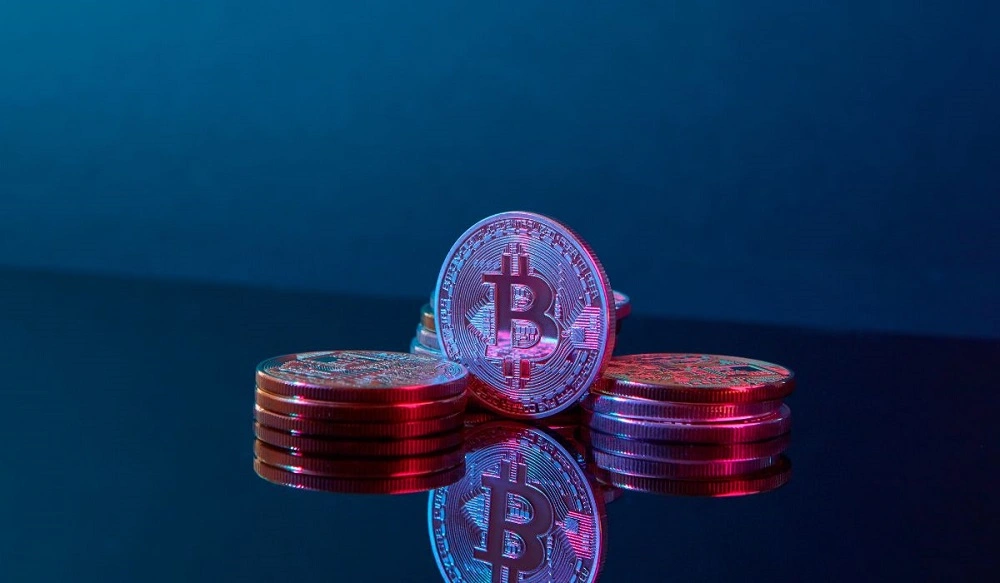Making money online isn’t as easy as it used to be, with more competition, high platform fees, and limited control over earnings. But Web3 is changing the game: no third parties, no platform restrictions, just full ownership and transparency over your digital assets.
Whether you’re a small business owner, a startup, or an individual looking for new income streams, Web3 offers endless opportunities. Let’s explore the top 10 powerful ways how to make money in web3 below.
10 best ways to make money in Web3
Here are the 10 best ways to get started making money with Web3:
1. Earn money via NFTs (Non-Fungible Tokens)
NFTs help you earn money by turning digital items into valuable assets. You can mint and sell them directly on platforms like OpenSea or Rarible without any middlemen, making it a great source of income. If you’re an artist, photographer, or musician, NFTs allow you to monetize your work while retaining full ownership and control. On top of that, you can earn royalties every time your NFT is resold, often 5 – 10%, which creates a steady stream of passive income.
How to get started?
- Create a crypto wallet (e.g., MetaMask) to store your NFTs and crypto earnings.
- Buy a small amount of ETH (or SOL, MATIC) to pay for minting fees.
- Choose a marketplace like OpenSea, Rarible, or Magic Eden (for Solana).
- Upload your file & mint it as an NFT
- List it for sale and set royalties so you keep earning when it’s resold.
- Promote your work on X (Twitter), Discord, or NFT communities to attract buyers.
Beyond creating, flipping NFTs is another way to profit. This strategy follows the “buy low, sell high” principle, where collectors purchase underpriced NFTs and resell them at a higher value. Tools like Rarity Tools or Nansen can help you spot projects with strong communities, limited supply, or rare traits – all indicators of higher resale potential.
Notably, Beeple sold an NFT artwork for $69 million, making him one of the most valuable living artists. This demonstrates how NFTs will transform the art world and create the future of digital ownership.
Keep in mind the risks: prices are volatile, scams are frequent, and gas fees on Ethereum can be high. If you’re just starting out, consider cheaper blockchains like Polygon or Solana to cut costs.

2. Invest & trade cryptocurrencies
It could be a big mistake to overlook crypto when talking about making money with Web3. The easiest method is to buy and hold (HODL) coins like Bitcoin (BTC) or Ethereum (ETH). If their value goes up over time, you profit.
How to get started
- Create an exchange account on a platform like Binance, Coinbase, or Kraken.
- Deposit fiat or stablecoins (like USDT or USDC).
- Buy your first crypto (e.g., BTC, ETH, SOL).
- Choose your style: hold long-term, or trade actively.
- Secure your assets in a wallet (hardware wallets like Ledger/Trezor are safest).
If you prefer a more active approach, you can try crypto trading. Platforms like Binance (CEX) or Uniswap (DEX) allow you to use strategies such as:
- Day trading: capitalize on short-term price moves.
- Swing trading: hold for several days or weeks based on market trends.
- Arbitrage: profit from price differences across exchanges.
This method can be more profitable but comes with higher risk and volatility. Always set stop-loss oerders and avoid overleveraging.
Another option is to earn free tokens via airdrops. Many new blockchain projects distribute tokens to early users. Airdrops are usually first come, first served – you can track upcoming ones on CoinMarketCap, AirdropAlert, or project Discord groups. In 2026, Berachain airdropped 79M BERA tokens (~ $632M) to early users during its mainnet launch.
Risks:
- Prices are highly volatile.
- Scams and fake airdrops are common – always verify official sources.
- Regulations vary by country, so check compliance before investing.
Pro tip: To explore passive income, you can also stake your crypto directly on exchanges or DeFi platforms and earn yield while holding.
3. Earn through virtual land and the Metaverse
Metaverse is an immersive digital world where people can socialize, shop, work, and play. Within it, platforms like Decentraland and The Sandbox allow users to buy and own virtual land – essentially parcels of digital real estate recorded on the blockchain.
There are several ways to earn from this:
- Develop and monetize land: build virtual stores, event venues, or entertainment hubs that businesses and creators can rent for exposure.
- Lease or rent land: just like in the physical world, you can rent your digital plots for passive income.
- Resell at higher value: since virtual land is limited, demand can drive prices up, allowing investors to flip properties for a profit.
For example, Snoop Dogg’s “Snoopverse” mansion in The Sandbox helped nearby plots sell for over $450K.
Risks: Prices are highly speculative, liquidity is low compared to crypto, and land value depends on the platform’s long-term success.
4. Developing and monetizing dApps
Decentralized applications (dApps) are apps that run on blockchain networks like Ethereum, Solan, or BNB Chain. Unlike traditional apps, dApps don’t rely on a central authority, making them open, transparent, and censorshop-resistant.
How to earn with dApps:
- Transaction fees: Charge users a small fee for swaps, lending, or in-game transactions.
- Premium features: Offer extra services like analytics dashboards, enhanced functionality, or priority access.
- Tokens & reward: Launch your own token to incentivize users and create an internal economy.
Quick actionable steps:
- Choose a blockchain: Ethereum for broad adoption, Solana for low fees, or BNB Chain for speed.
- Develop your smart contracts: Use Solidity (Ethereum/BNB) or Rust (Solana).
- Deploy your dApp: Connect to wallets like MetaMask or Phantom for user access.
- Monetize: Set fees, launch tokens, or implement subscription/NFT access.
- Promote & audit: Market your dApp in relevant communities and audit smart contracts for security.
A great example is Uniswap, a decentralized exchange on Ethereum, generates millions in daily trading fees by charging a small percentage on each swap.
Risks: Smart contract bugs, high dev costs, tough competition, and unclear regulations.

5. Utilize DeFi for Business Funding and Yield Generation
Decentralized Finance (DeFi) opens up banking services without intermediaries. Instead of going through traditional banks, busineses can borrow crypto-backed loans on platforms like Aave and Compound. In this way, you get liquidity while still holding your crypto.
For individuals, DeFi is also a strong source of passice income:
- Staking: Lock your crypto (e.g., ETH, SOL, ADA) to support the network and earn rewards.
- Yield farming: Provide liquidity to DeFi protocols (like Uniswap or Curve) and collect interest or token rewards.
- Lending: Deposit stablecoins (USDT, USDC, DAI) into protocols and earn steady yields without actively trading.
As of 2026, Aave has over $10B in total value locked (TVL), showing strong adoption of crypto lending and borrowing. Meanwhile, Lido Finance lets users stake ETH and earned billions in staking rewards in 2024–2025.
Risks: Smart contract exploits, impermanent loss (for liquidity providers), and price volatility.
6. Launch a decentralized autonomous organization (DAO)
A DAO is a blockchain-based community where rules and decisions are coded in smart contracts instead of being controlled by a central authority. Members buy or receive governance tokens, which give them voting power on how the DAO operates and where funds should go.
For businesses and creators, DAOs are a new way to raise capital and build loyalty. Instead of relying on VCs, you can invite your community to fund projects and reward them with ownership rights. This not only provides financing but also creates a highly engaged customer base.
How to get started
- Define the purpose of your DAO (e.g., community fund, project investment, brand community).
- Choose a DAO framework like Aragon, DAOstack, or Colony to launch quickly.
- Create governance tokens to distribute voting rights.
- Set up a community hub (Discord, Telegram) to coordinate decisions.
- Launch a funding round, inviting early supporters and investors.
Aiccelerate DAO (AICC) recently raised $175,000 from 245 invited users. Soon after launching, its market value jumped to $150 million – nearly 1,000 times the initial amount. This shows how DAOs can quickly gather funds and build strong communities.
Risks: Regulatory uncertainty, governance attacks (51% token control), and difficulty sustaining community engagement over time.
7. Offer Web3 services
The Web3 boom has created a strong demand for experts who can help businesses and projects enter this space. Whether you’re a developer, designer, or strategist, there are multiple ways to monetize your skills.
Opportunities include:
- Smart contract development: Build and audit contracts for DeFi, NFTs, and DAOs. Clients often hire via Gitcoin, Upwork, or specialized Web3 job boards.
- Consulting: Guide traditional businesses on how to integrate Web3 – from NFT launches to token models and blockchain adoption.
- Design & marketing: Create Web3 brand identities, community strategies, and tokenomics campaigns.
Platforms like Gitcoin, Braintrust, or Upwork can help you find clients and get paid for your skills. Network in Discord, Telegram, and Web3 hackathons to showcase your skills.
In 2026, developers participating in Gitcoin hackathons collectively earned over $40 million in grants and bounties, proving how Web3 talent marketplaces can pay off.
8. Earn through Play-to-earn (P2E) games
Play-to-earn (P2E) games are a fun way to learn how to make money in Web3 while gaming. Games like The Sandbox, Gods Unchained, and Axie Infinity turn your gaming time into real cash. These games let you collect tokens, digital cards, or vitual land that can be sold for money.
How you can earn with P2E
- Play and collect rewards: Earn tokens or NFT assets by completing quests, winning battles, or ranking high on leaderboards.
- Sell in-game assets: Trade rare skins, weapons, or virtual land on marketplaces like OpenSea or Magic Eden.
- Rent out NFTs: If you own valuable characters or land, rent them to other players (a common practice in Axie guilds).
- Create in-game items: Design custom assets (skins, land features, accessories) and sell them to other players for profit.
In 2026, over 2.8 million Filipinos are actively participating in P2E ecosystems. Meanwhile, Axie Infinity has surpassed $2 billion in all-time NFT sales on its Ronin sidechain, proving that Web3 games can build both massive communities and real economic value.
Risks to consider:
- Many P2E economies are unsustainable if new player growth slows.
- Some games require expensive NFT buy-ins, creating high upfront risk.
- Token and asset prices are volatile, meaning earnings can fluctuate sharply.
Pro tip: Start with free-to-play titles like Gods Unchained or look for guilds that lend starter NFTs before investing heavily.
9. Make money via Web3 content
Web3 is reshaping how creators earn from their work. Instead of relying on ads or centralized platforms like YouTube and Twitch, creators can use decentralized alternatives such as Audius, LBRY, Theta Network, Mirror, and Zora to earn crypto directly from their audience.
How you can earn with Web3 content:
- Stream and earn tokens: Upload music, videos, or podcasts on platforms like Audius or Theta Network and receive rewards based on engagement.
- NFT-based subscriptions: Use platforms like Mirror and Zora to sell exclusive content via NFTs, giving fans token-gated access to articles, music, or private communities.
- Token-gated memberships: Create exclusive clubs or courses where NFTs act as access passes.
- Build your own platform: Businesses can launch tokenized streaming or content hubs to attract loyal users while sharing revenue fairly with creators.
In 2026, Audius surpassed 7.5 million monthly active users, with independent musicians earning directly from fan engagement without intermediaries. This proves that Web3 content platforms can rival traditional giants while giving creators better pay and ownership.
Risks to consider:
- Many Web3 platforms are still early-stage and may lack stable user bases.
- Token rewards are volatile, and income can fluctuate with market prices.
- Discoverability is harder than on mainstream platforms, so creators need strong community engagement to grow.
Pro tip: If you’re starting small, publish your first content on Mirror or Audius to test the waters, then scale by building token-gated memberships for your most loyal fans.
10. Get paid for being an active member in Web3 communities – The easiest way to make money
Many Web3 projects reward active community members with tokens. DAOs, DeFi platforms, and NFT initiatives often incentivize contributors who help their communities grow. The best part is that you don’t need to invest money; all it takes is your time and skills.
- Join DAOs such as BanklessDao or DeveloperDAO, where members receive tokens for taking part in decisions or supporting projects.
- Manage communities on Discord or Telegram for crypto projects and get paid in tokens.
- Test new dApps through platforms such as RabbitHole or startup-specific campaigns, report bugs, and earn rewards.
These tokens can be exchanged for real money or kept as long-term assets. By simply being active and engaged, you can turn community participation into meaningful income.
Risks: Rewards aren’t guaranteed; some tokens may lose value or never list on exchanges. Avoid overcommitting time without verifying project credibility.
Getting started with Web3 monetization
Jumping into Web3 might seem tricky, but you can start earning with a few simple steps. Here’s how you can begin:
- Decide how you want to earn – Sell NFTs, stake in DeFi, play Web3 games, build dApps, or launch a DAO. Choose what fits your skills and interests.
- Choose the right blockchain & tools – Ethereum is popular but has high gas fees, while Solana and Polygon offer faster, cheaper transactions. For NFTs, use OpenSea or Rarible; for DeFi, try Uniswap or Aave; and for Web3 streaming, Audius is a great choice.
- Set up your Web3 wallet & payment system – A wallet like MetaMask, Coinbase Wallet, or Phantom lets you store digital assets and get paid securely.
- Use existing platforms – Instead of starting from scratch, use existing platforms to earn. Sell NFTs, stream on Web3 platforms, or play blockchain games—many offer guides for beginners.
- Test before going big – Start with small transactions, test different earning methods, and track what works best for you.
- Stay safe – Web3 is full of opportunities, but also risks like rug pulls, phishing scams, and Ponzi schemes. Always verify projects, use trusted platforms, and keep your private keys secure.
How can you make the most profit in Web3 with Synodus?
Web3 is full of opportunities, but turning them into real profits isn’t always easy. Especially if you’re running a startup or small business with limited resources. Instead of struggling to figure it all out alone, you can partner with Synodus to reduce costs and maximize results.
With a tailored Web3 strategy, you can launch a profitable NFT project, build a DeFi platform, or create a tokenized asset marketplace.
Synodus helps you to:
- Turn your digital assets into high-value NFTs: Transform art, collectibles, or brand experiences into sought-after NFT products.
- Earn passive income with DeFi: Set up DeFi protocols, integrate smart contracts, and leverage liquidity pools for steady revenue.
With end-to-end support from Synodus, you can build, launch, and scale your Web3 venture with confidence. You will end up saving more time on testing and expenses for errors.
Explore how Web3 can work best for you.
Conclusion
Web3 is changing the way people earn money online, offering endless opportunities with NFTs, crypto, DeFi, and more. Whether you’re an artist, investor, developer, or just looking for a new income stream, there’s a way for you to profit.
The key is to start small, pick the right strategy, and stay informed. Explore different Web3 platforms, test what works best, and always keep security in mind.
And if you need expert guidance on how to make money in web3, Synodus is here to help you turn your Web3 ideas into real profits – without the guesswork.
FAQs
People earn in Web3 through staking tokens, trading NFTs, playing play-to-earn games, creating content on decentralized platforms, joining DAOs, or contributing to communities. Earnings vary depending on time, skills, and assets invested.
Not always. Web3 offers real opportunities but also scams, hacks, and high volatility – always verify projects and use secure wallets.
No. Many opportunities (community work, playing P2E games, content, testing) don’t require coding.
Yes in most countries. Airdrops, staking rewards, and NFT sales are often taxable events.
Helpful skills include community management, content creation, smart contract coding, or just being active and consistent in Web3 groups.
How useful was this post?
Click on a star to rate it!
Average rating / 5. Vote count:
No votes so far! Be the first to rate this post.




